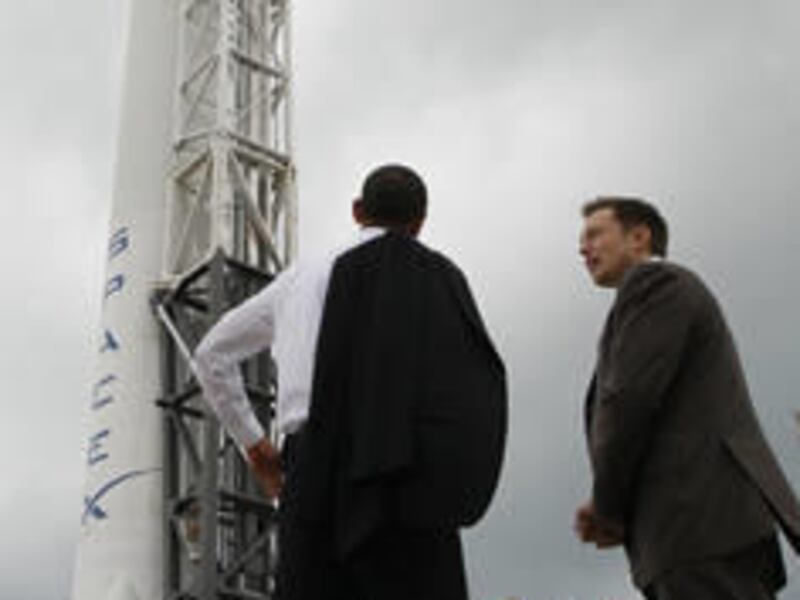CAPE CANAVERAL, Fla. — Without fanfare, without crowds of curious spectators, the future of the United States' space program sits on a launching pad here.
The rocket, a Falcon 9 built by Space Exploration Technologies Corp., or SpaceX, for short, is unassuming — a runt compared to NASA's space shuttles. It is scheduled to lift off Wednesday morning and place into orbit an empty capsule, designed to carry cargo and eventually astronauts, which will circle the Earth twice before splashing down in the Pacific. The mission is to last less than 31/2 hours.
Although the flight lacks in theatrics, it marks a major shift in the space program toward private industry. It is the first demonstration flight under a NASA contract that is to lead to SpaceX's ferrying supplies to the International Space Station.
NASA, under a new space exploration blueprint signed into law in October, will now embark on a similar strategy for sending astronauts to orbit — buying rides from commercial companies rather than operating its own rocket.
Few details have been revealed about the so-called commercial crew program, but the earlier cargo program, started in 2006, demonstrates some of the promise of greater bang for the buck. During a news conference Monday, Philip McAlister, acting director of commercial spaceflight development at NASA, pointed to the $253 million NASA paid SpaceX so far for development of the Falcon 9 and Dragon capsule and to the four years that it took to reach the first demonstration flight — cheaper and quicker than previous rocket programs.
The hope is that the commercial crew program, with NASA likely to invest several billion dollars over the next six years, will enlist companies like SpaceX to drive down the cost of space travel and allow NASA to devote its limited budget to more ambitious missions to send astronauts farther out into the solar system.
The cargo program also offers reason for caution because companies do not always meet their lofty predictions.
The program ran into an almost immediate speed bump when one of the two companies NASA chose, Rocketplane Kistler, could not raise the money it needed. NASA canceled Kistler's contract the following year and had to run a second competition.
SpaceX has been able to meet 17 of the 22 milestones in its contract, but took twice as long as it expected to do so. When it signed its contract in 2006, it predicted that it would get the first demonstration flight off in 2008.
Because of the fixed-price contract, NASA did not pay extra, but SpaceX had to seek additional financing from investors. Fixed-price contracts save taxpayers money if a company eventually completes its obligations, but waste time and money if the company fails like Kistler did.

